DAWSON CITY, YUKON — If there was a betting pool on which junior mining companies will bring Canadian assets into production over the next five years, Kaminak Gold (TSXV: KAM; US-OTC: KMKGF) would be one of the favourites. Despite potential jurisdictional challenges, and an uncooperative gold price, the company has no trouble raising capital, and is looking to pour first gold at its Coffee gold project in the Yukon by 2019.
During the scenic flight out to Kaminak’s base of operations — 130 km south of Dawson City, along the Yukon River — it’s pleasant to encounter a phenomenon that’s becoming all too rare in the mining industry: optimism. The company recently wrapped up fieldwork on a feasibility study it expects to complete in early 2016, and landed a $22.5-million private placement that includes investments by mining luminaries Ross Beaty and Lukas Lundin.
Rolling into Kaminak’s year-round camp on well-maintained gravel roads, it’s easy to assume that the site hosts a fishing lodge. The company picked up an old outfitter’s camp on the banks of the Yukon River, and the rough-cut wood cabins lend an anachronistic charm that harkens back to historic days in the Klondike.
Kaminak will celebrate its 10-year anniversary in late November, and it’s taken the company under seven years to advance Coffee from a grassroots exploration play into an asset that could be shovel ready by early 2017. As part of the FS at Coffee, Kaminak undertook a 70,000-metre infill drill campaign in 2014 on four main deposits: Supremo, Latte, Double Double and Kona.
In late September the company tabled an updated resource estimate on the project that boosted global indicated grades by 8%, and inferred ounces by 12%. Coffee now hosts 52 million indicated tonnes grading 1.68 grams gold per tonne for 2.8 million contained oz. gold. Inferred resources total 14.3 million tonnes at 1.56 grams gold for 719,000 oz. gold.
“We’re looking at a new deposit style for the Yukon. Many of the regional deposits within the Tintina Trench have some form of association with porphyry-style mineralization, but Coffee is unique,” president and CEO Eira Thomas said during a presentation at Kaminak’s base of operations.
“We’re part of a high-grade, structurally hosted hydrothermal system, and the deposit is situated in an area that’s never been glaciated. That’s a real advantage, since our deposits are highly weathered or oxidized, and we’ve demonstrated they have a strong amenability to heap leaching,” she added.
The oxide opportunities at Coffee formed the foundation for a preliminary economic assessment (PEA) Kaminak released last year. The mine plan models a US$305-million open-pit mine, with an 11-year life that would crank out 167,000 oz. gold per year at all-in sustaining costs of US$688 per oz. Assuming a US$1,100 per oz. gold price, Coffee would generate an after-tax net present value of US$194 million at a 5% discount rate, along with an 18% internal rate of return.
“We’re feeling confident about the assumptions in our PEA, even though the market has changed since we released the results last year,” Thomas continued. “Gold prices are lower, but taking into consideration exchange rates … many of the variables we used in the study are still relevant. It’s also vital to remember that in heap-leach terms, this is a high-grade deposit.”
Ascending along a well-kept, 23 km gravel road and across the Coffee property, it’s possible to envision Kaminak’s mine plan as it progresses from the Latte deposit through to Double-Double and Supremo. The company is blessed with a few natural advantages outside the oxidization and grade of the mineralization, including some cooperative natural topography and a mine plan that allows for a relatively small footprint.
Deep trenches at Latte mark areas where Kaminak harvested samples for recent column-leach testing. Thomas adds that part of current engineering involves run-of-mine material, and just “how coarse” it can be and remain economic. Assuming the company can go with coarser material, it’s possible that anticipated capital expenses will decline heading into the feasibility study. The current plan models 88% life-of-mine recoveries.
The next stage of the tour involves an aerial view of the Coffee site by helicopter, which cuts low over the Supremo deposit before landing on a flat, plateau-like area where Kaminak will put most of its project infrastructure.
The camp will relocate to higher ground, while the planned sites for Coffee’s three waste-rock piles run off to a horizon dotted by stunted evergreen trees. Since most of the host rock at Coffee is non-acid generating, the company will likely not need any water-treatment facilities.
In the end, the Coffee plan sums up nicely in one word: simple. And despite having faith in the current PEA, Kaminak has already identified areas for improvement in the feasibility study outside of any metallurgical tweaks.
“There are exciting ideas in the works,” Thomas says. “We’re looking at a ridge-top heap-leach facility design, an alternate access route to the project and a new power source. We’re targeting just over 2 million oz. of primary mineralization across our current pits. It’s a simple layout and everything we’re doing is based on tried-and-true technologies. The fact we don’t require a mill or tailing facilities should hopefully make permitting quite straightforward.”
Common knowledge tends to indicate that cold-weather heap-leach processes perform better when installed in valleys, since the set-up helps miners shield infrastructure from natural exposures.
Kaminak studied alternatives, however, and determined that a ridge-top model would benefit Coffee’s operations, due to the topography and mine sequencing. The intention is to mine and leach all year-round, but the company won’t stack ore on the heap pads in the coldest winter months.
Kaminak is also looking at the current hot topic in the Yukon — liquified natural gas — and hoping a new road route will lower development costs.
The transportation plan had been to piggyback on the Freegold road through Western Copper and Gold’s (TSX: WRN; NYSE-MKT: WRN) bulk-tonnage Casino project, which comes within 30 km of Coffee. Kaminak realized that Casino might hit construction too late, however, and management searched for alternate access points.
After analyzing nine options, Kaminak settled on a northern route that would connect Coffee to the historic town of Dawson City. The proposed road is 190 km long — more than 160 km of which already exists as public road, with some parts needing an upgrade to meet transportation and safety specifications. Both the Stewart and the Yukon rivers transect the route and will be crossed via ferry while the river flows, and via ice bridge when it’s frozen.
“It wasn’t a simple matter of hitching Coffee to [the Casino] wagon, because we have different logistic needs and different First Nation politics,” Thomas says, as she points out the area where the road would access Kaminak’s camp.
“It actually surprised us that this would be cost effective, but there is already a road serving placer operations. We don’t need a two-lane paved highway. Our needs are served by a forestry-style gravel road, since the only thing we’ll do is transport fuel and supplies to site,” she continued.
Kaminak figures its feasibility budget
will total US$36 million, and it will spend US$21 million at the project this year. But Thomas is quick to point out a major aspect that first attracted her to Coffee: even greater exploration upside.
Standing atop Kaminak’s proposed mine site, it’s not hard to understand why the company calls its 150 sq. km Coffee land position a prospective “district play.” Since making the initial discovery in 2010, Kaminak has drilled 16 separate and distinct gold zones, which were all discovered by drilling underneath gold-in-soil anomalies.
“We’ve focused on what we see as our initial mining opportunity, but we fully intend on getting back to that fundamental, grassroots exploration, because there are plenty of potential deposits and more ounces to be found on the property,” Thomas says during the helicopter ride back to camp.
“We’re really stepping-out and trying to understand some of our regional potential. There are quite a few anomalies to the west, and that’s one area where we’ve really only scratched the surface. It’s going to be a big focus for us next year.”
Kaminak closed a $22.5-million private placement in late October, wherein it issued 27.4 million units, with each unit comprised of a share and a warrant exercisable at $1.05 for two years. Shares have traded within a 52-week range of 61¢ to $1.15, and last closed at 79¢ per share. Kaminak has 171.2 million shares outstanding for a $137-million market capitalization.

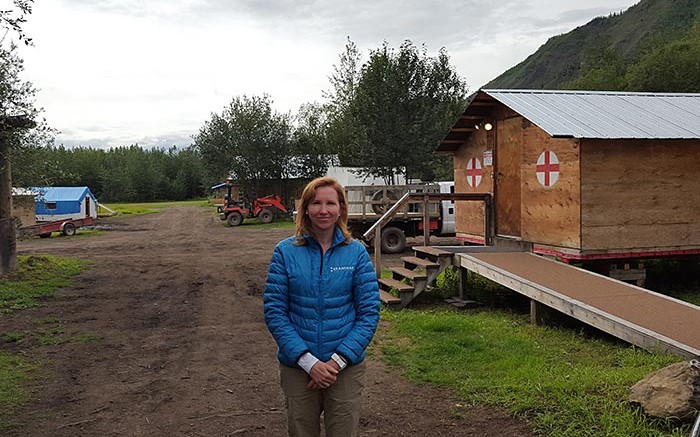
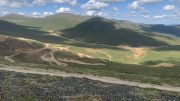
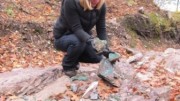
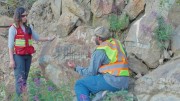
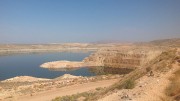
Be the first to comment on "Site Visit: Kaminak on track to build next Yukon gold mine"